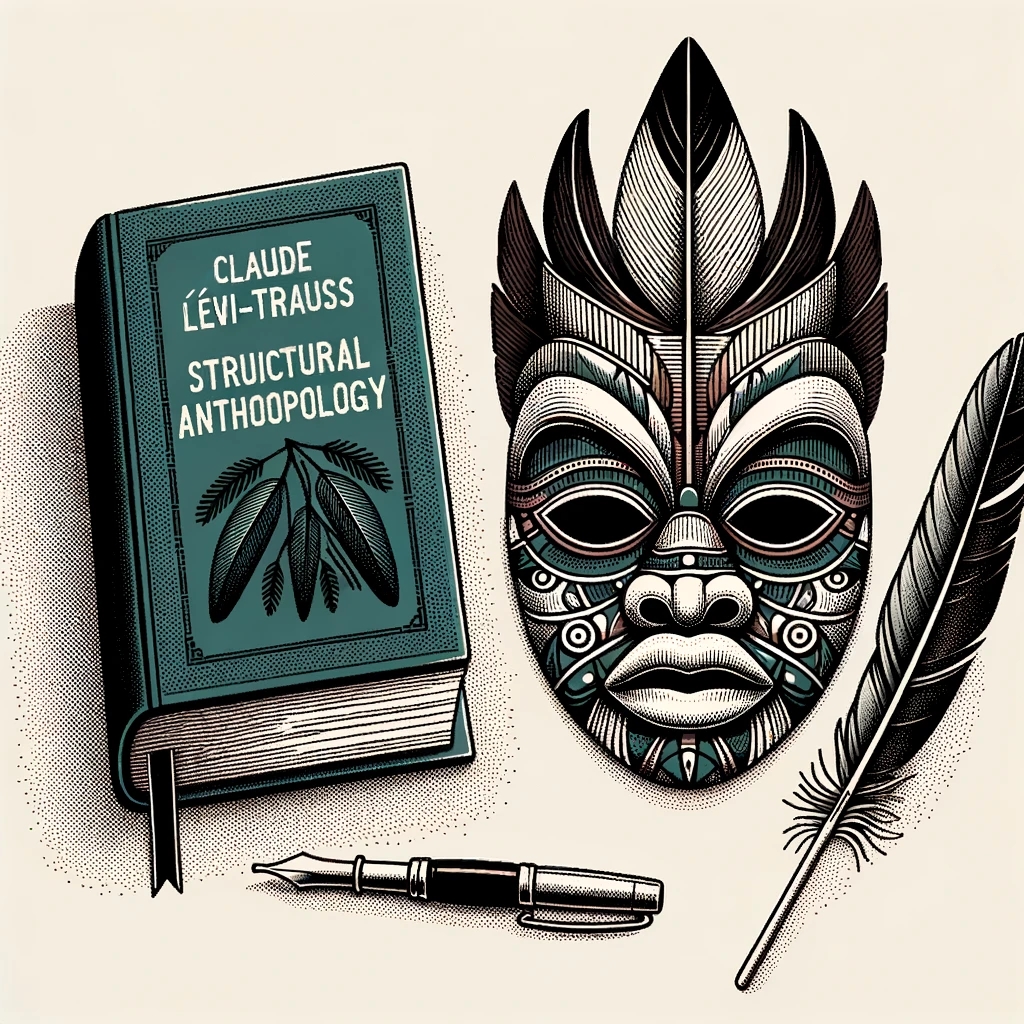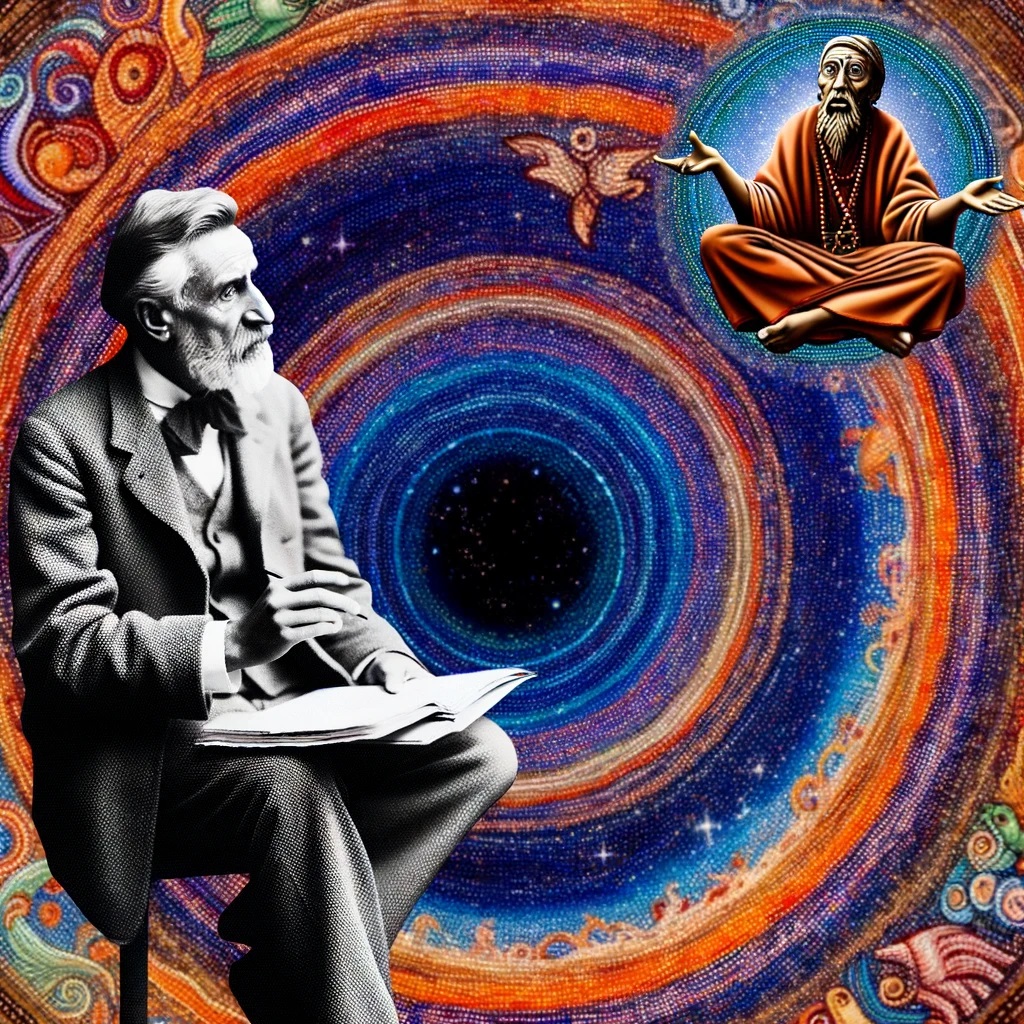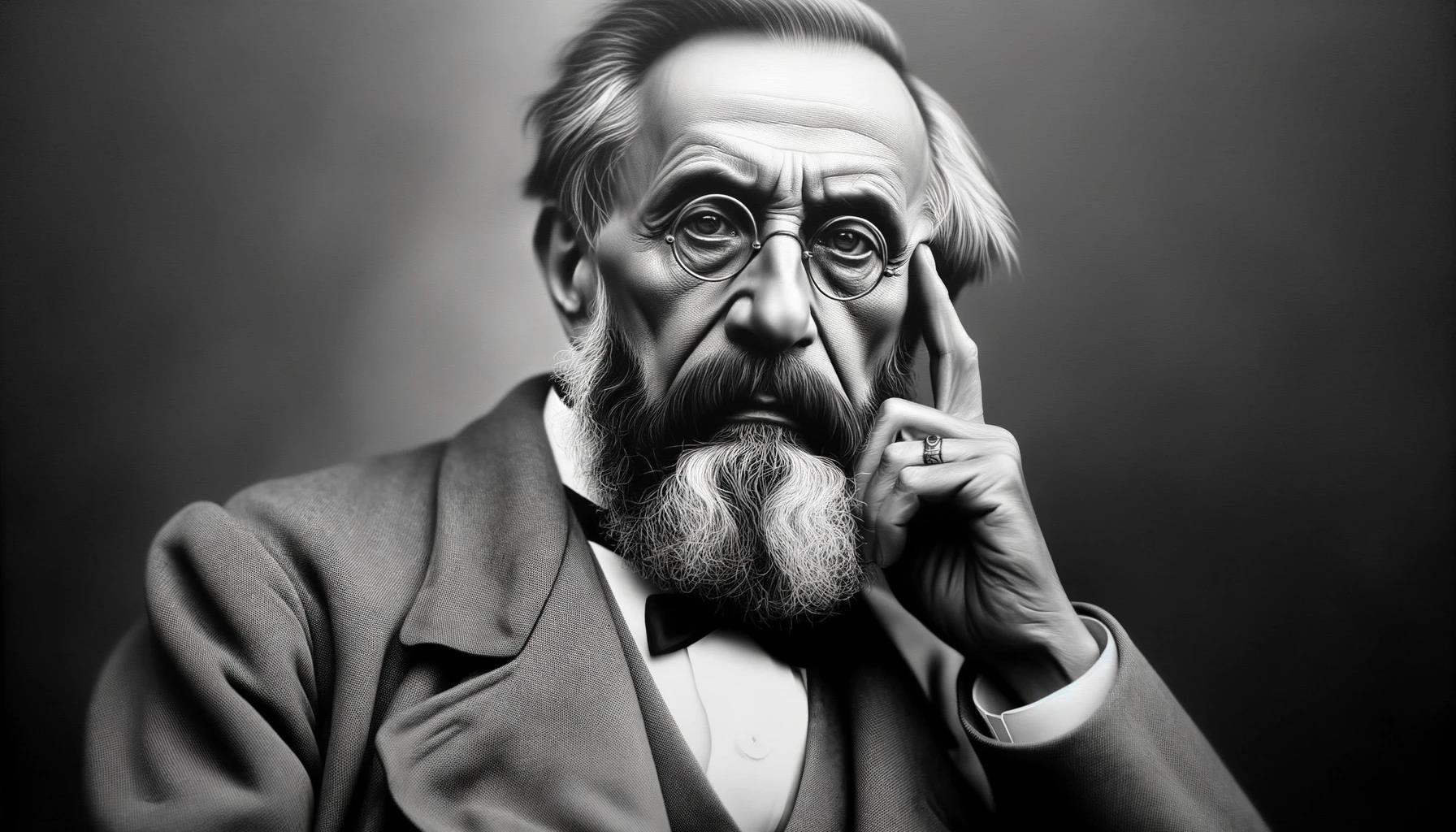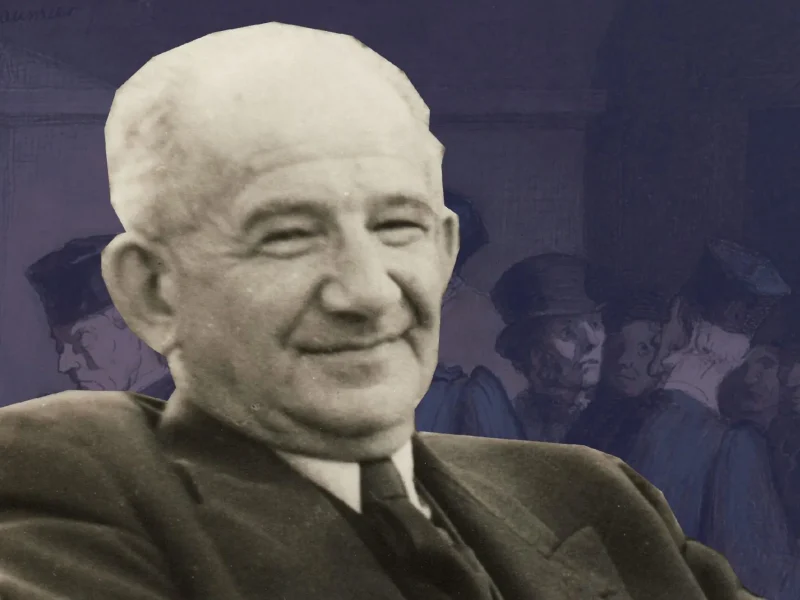Claude Lévi-Strauss wasn’t merely a name in the annals of anthropology; he was a trailblazer. His profound reflections reshaped the contours of anthropological thought. Born in the heart of 1908 Brussels, his exploration of diverse human societies unveiled a fresh lens: structural anthropology.

Probing into the intricate maze of the human psyche, Lévi-Strauss held a conviction that universal motifs anchored all human societies. He professed that these motifs weren’t haphazard. They had an order, reminiscent of the elaborate tapestries we discern in the natural world. Such a proposition was nothing short of revolutionary! It reframed how societies were perceived – not as mere assemblages of traditions and convictions but as complex systems underpinned by universal motifs.
What sparked this epiphany, you ask? Lévi-Strauss drew profound inspiration from linguistics. Just as languages are bolstered by structures – be it grammar or syntax – he championed the idea that cultures, too, bore distinct structures. These, he proposed, were deeply rooted in the human psyche. His approach was not confined to anthropology. It laid the groundwork for cross-disciplinary dialogues, fostering connections between anthropology and disciplines like psychology and sociology.
Among his myriad contributions, “The Raw and the Cooked” stands tall. In this masterpiece, he navigates the mythologies of indigenous South American communities. Yet, it’s not a mere anthology. Through these narratives, he illuminates his structuralist doctrine. He highlights the shared threads across varying myths, suggesting a commonality pointing to the universal structures in the human psyche.
Of course, Lévi-Strauss’s theories weren’t universally lauded. Groundbreaking notions seldom are. Some scholars felt his approach was overly conceptual, detaching anthropology from its hands-on fieldwork essence. Others opined that the rich tapestry of human cultures couldn’t be neatly encapsulated within one framework. Yet, the resonance of his ideas remains undiminished, offering profound insights into human societies to this day.
In conclusion, the indelible mark left by Claude Lévi-Strauss on the academic landscape is undeniable. His insights into the structured nature of the human mind, mirrored in global cultural patterns, have broadened our understanding. It’s a tribute to the might of an inquisitive spirit, forever in pursuit of deeper truths.
Claude Lévi-Strauss: A Deep Dive into Structural Thought

Claude Lévi-Strauss wasn’t just a name in anthropology; he was its lodestar. His explorations into the heart of human civilizations unveiled a novel perspective: Structural Anthropology. Rather than perceiving societies as amalgamations of traditions and norms, Lévi-Strauss unveiled a canvas of intricate universal designs binding them.
Central to his methodology was the idea that our minds harbor innate universal frameworks that influence how we interpret, narrate, and act. These aren’t mere abstract concepts but tangible structures manifesting in myths, folklore, and even kinship relations across cultures.
Pivoting to myth analysis, Lévi-Strauss’s lens was distinctive. He mined myths from varied societies, spotlighting shared structural threads. Beyond the narrative, he sought the underlying dynamics. He often elucidated dichotomies in myths, such as the raw versus the cooked or the natural versus the cultivated, indicating that these contrasts mirror foundational human cognition.
His scrutiny of kinship systems transcended mere societal norms. He delved into the bedrock structures dictating relationships and matrimonial customs. Surveying these frameworks across diverse societies, he illuminated universal patterns and designs, regardless of cultural milieu.
Linguistics was a cornerstone in his discourse. Drawing analogies between linguistic constructs and societal patterns, Lévi-Strauss postulated that akin to the grammar and syntax in languages, cultures too operate on analogous structural guidelines. This fusion of linguistics with anthropology marked a paradigm shift, ushering in an enriched, integrated understanding of societies.
His magnum opus, “The Raw and the Cooked,” is more than a chronicle of indigenous South American myths. It’s a tapestry where he embroiders his overarching structuralist tenets, spotlighting the universal motifs weaving through them.
Yet, groundbreaking visions often tread the path of scrutiny. While many lauded Lévi-Strauss’s revelations, others felt they leaned towards the conceptual, potentially sidelining anthropology’s tangible fieldwork essence. Some contended that the multifaceted mosaic of human societies resisted a monolithic structural lens. However, the resonance of his insights remains undiluted, etching an indelible mark on anthropological pursuits.
Through his meticulous endeavors and deep-seated revelations, Claude Lévi-Strauss offered a rejuvenated prism to perceive human societies. His emphasis on universal motifs and patterns revolutionized anthropology, beckoning a fresh introspection into the complex matrix binding our global tapestry.
Claude Lévi-Strauss: A Journey Through Myth Analysis

In the grand tapestry of anthropological exploration, Claude Lévi-Strauss stands out as a luminary, especially when charting the seas of Myth Analysis. His endeavors, a fusion of astute observation and reflective thought, revolutionized the realm of mythical interpretation.
Centerstage in Lévi-Strauss’s quest was the conviction that myths, regardless of their cultural genesis, were anchored by certain universal frameworks. These weren’t mere tales birthed by civilizations; they were narratives, meticulously crafted, bound by designs that spanned continents and epochs.
Lévi-Strauss’s odyssey into Myth Analysis wasn’t a mere academic excursion. It was a pilgrimage to unveil the universal motifs and designs buried within mythical tales. He championed the idea that these designs, once unraveled, could shed light on human thought processes and societal interpretations.
A cornerstone of his methodology lay in emphasizing binary contrasts. Lévi-Strauss theorized that a myriad of myths hinged on a system of polarities, such as light vs. dark or terrestrial vs. celestial. These polarities, in his view, weren’t mere storytelling tools but mirrored deeper cognitive dynamics.
But what fueled these revelations? Lévi-Strauss, akin to a master craftsman, deconstructed myths, seeking recurring narratives, emblems, and themes. This pursuit revealed designs and structures that mirrored strikingly across varied cultures. This wasn’t serendipity; it was a beacon pointing to the universal frameworks innate to human cognition.
His Myth Analysis also drew parallels from linguistics. Mirroring the structure in languages, Lévi-Strauss postulated that myths bore their own rulebook. These rules, he believed, were birthed from the evolution and perceptions of human societies.
While Lévi-Strauss’s postulations were avant-garde, they weren’t without skeptics. Some academia felt his lens was somewhat rigid, attempting to box the diverse realm of myths into structured confines. Yet, his monumental contributions to Myth Analysis remain an epitome in the field.
His tireless pursuits have not just reshaped anthropology’s landscape but have also crafted a renewed lens, enabling a deeper understanding of myths that have been society’s backbone for ages. Through his discerning eye and relentless research, Claude Lévi-Strauss has sculpted a legacy, ensuring myths are viewed with renewed reverence.
Claude Lévi-Strauss: Unraveling Ties That Bind

Venturing into the labyrinth of societal constructs and traditions, Kinship Systems stand out as a beacon, guiding us through the maze. At the helm of this exploration was none other than Claude Lévi-Strauss, a maestro who delved deep, seeking patterns and structures that underpin these systems.
Not merely content with surface-level observations, Lévi-Strauss ventured deeper, unearthing the universal frameworks that shape kinship across cultures. These weren’t mere societal norms; they were intricate designs, meticulously crafted, reflecting the deep-seated human need for connection and belonging.
The crux of Lévi-Strauss’s approach was his belief in the presence of underlying structures in kinship. These structures, he opined, weren’t random or arbitrary. Instead, they were the product of human cognition and evolution, mirroring patterns seen in other societal constructs.
His foray into Kinship Systems wasn’t a solitary endeavor. Drawing parallels with linguistics, Lévi-Strauss believed that just as languages are governed by grammar and syntax, kinship too operates on similar structural principles. This interdisciplinary approach marked a paradigm shift, offering a fresh lens to view and understand kinship.
Yet, as with any groundbreaking idea, Lévi-Strauss’s theories were met with skepticism. Some argued that kinship was too complex, too varied to be boxed into a structured framework. Others felt that while there might be some universal patterns, the uniqueness of each culture’s kinship couldn’t be overlooked. However, the resonance of his ideas remains undiluted, echoing through the corridors of anthropology.
Through his discerning eye and relentless pursuit, Claude Lévi-Strauss offered invaluable insights into the ties that bind us. His work on Kinship Systems not only reshaped anthropology but also deepened our understanding of the intricate web of relationships that form the bedrock of societies.
Lévi-Strauss: Unraveling “Tristes Tropiques”

In the literary cosmos, there are works, and then there are masterpieces. Nestled in the latter category is Claude Lévi-Strauss’s “Tristes Tropiques”. More than an exploration of lands, this oeuvre delves into the complex tapestry of human societies, casting a fresh perspective on beliefs, rituals, and connections.
Navigating the pages of “The Sad Tropics”, readers embark not just on a geographical journey but on a profound expedition into the heartbeats of civilizations. Lévi-Strauss, with his discerning anthropological lens, offers a kaleidoscopic view of communities, highlighting the intricate dance of traditions that bind and define them.
But “Tristes Tropiques” is not merely an observer’s account. It’s a reflection, a contemplative narrative that traverses beyond the tangible, delving into the realm of ethos and emotions. Lévi-Strauss’s musings, while anchored in his voyages, soar into universal terrains, presenting insights that resonate across epochs.
This work isn’t just about places or rituals. It’s a chronicle of introspection, a testament to Lévi-Strauss’s quest to decode the myriad nuances of humanity. It’s his lyrical tribute to the world—a realm he embraced, seeking to unravel its many mysteries.
Lévi-Strauss: A Legacy of Laurels

Within the tapestry of anthropology and intellectual pursuits, few luminaries shine as brightly as Claude Lévi-Strauss. Beyond his profound contributions to the realm of thought, his journey is punctuated with numerous awards and waves of recognition, marking his indelible imprint on academia and beyond.
Lévi-Strauss wasn’t just a thinker; he was a beacon, whose insights illuminated the corridors of anthropology. The world took notice. Over the years, his mantle was adorned with numerous accolades, each a testament to his unparalleled contributions.
The Wenner-Gren Foundation, a stalwart in anthropological research, was among the first to recognize Lévi-Strauss’s genius. Their endorsement wasn’t just a nod to his scholarship but a reflection of his ability to redefine boundaries and challenge conventions.
But the recognition didn’t stop there. As years unfolded, so did the cavalcade of honors. Renowned institutions and academic circles, from the heart of Europe to the Americas, queued up to bestow upon him their highest awards. Each accolade was not just a medal or a certificate; it was an acknowledgment of his ability to peer deep into the human psyche, to unravel the threads that bind societies, and to present them in a tapestry of words and theories.
His magnum opus, “Tristes Tropiques”, became a touchstone in anthropology. Yet, it was his broader body of work, his theorems, and his unique ability to synthesize vast swathes of information that drew global attention. The French Academy, known for its stringent standards, welcomed him into its fold, marking yet another pinnacle in his illustrious journey.
While Lévi-Strauss’s work was deeply academic, its ripples were felt far and wide. Governments, cultural institutions, and even the common man stood up to take notice. The array of awards and honors conferred upon him spanned continents, underscoring the universal appeal and relevance of his work.
Conclusion
Navigating the intricate corridors of human understanding and cultural exploration, the name Claude Lévi-Strauss resonates like a beacon of knowledge. His ventures into diverse human landscapes, spanning urban hubs to the most secluded tribal realms, have etched a pathway for profound insights into our collective essence and interconnected tales.
Through the lens of structural anthropology, Lévi-Strauss pioneered a canvas, painting vividly the realms of kinship structures and ancient mythologies. His writings, more than mere words, became an invitation—a call to embark on a voyage, seeking the myriad threads that weave the human narrative.
In an era of relentless evolution and flux, the wisdom distilled by Claude Lévi-Strauss stands as a monumental pillar, echoing the timeless spirit of inquiry and an insatiable quest for enlightenment. His footprints, dotted with global accolades and resonating with his insights, are sure to guide and inspire curious souls for epochs to come.
May his endeavors and reflections continue to light the torches of discovery, leading us towards a deeper, more enriched communion with our roots and shared stories.
Citations:
- “Unveiling Myths: The Science of Stories”
- “Humanity’s Tapestry: Lévi-Strauss on Culture”
- “Journeys Beyond Borders: The Chronicles of Tropics”
- “Glimpses from a Distance: A Cultural Odyssey”
- “The Nectar and the Flame: Decoding Myths”
- “Artistry of the Tribal: The Envious Creator”
- “Fundamentals of Ties: The Web of Relations”


